
ABERTO4
14 May — 8 June
As part of the Brazil-France Season 25 organized by the Guimarães Rosa Institute and the French Institute, the Le Corbusier Foundation is hosting the fourth edition of ABERTO, an exhibition concept created by art consultant Filipé Assis that combines modernist architecture and contemporary art.
Through 40 original works created especially by 25 major artists from the Brazilian scene, the exhibition explores the essential link between Le Corbusier and modernist architecture in Brazil, while highlighting the lasting influence of his work on contemporary Brazilian architects, designers, and artists.
The exhibition was designed by curators Lauro Cavalcanti, Kiki Mazzucchelli, and Claudia Moreira in collaboration with art institutions and galleries:
- The Le Corbusier Foundation, the Lucio Costa Estate, and the Burle Marx Institute have loaned archival documents and works from their collections, while the Oscar Niemeyer Foundation has produced a limited edition of the Marquesa de Niemeyer bench in red, edited by ETEL.
- Brazilian galleries Fortes d’Aloia & Gabriel, Mendes Wood Dm, Luisa Strina, Nara Roesler, and French gallery Mennour are presenting works by the artists they represent.
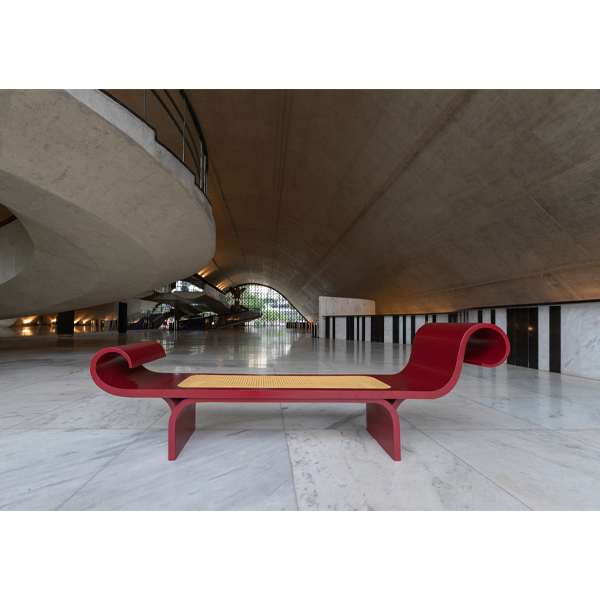

Le Corbusier's influence today
Works created for the exhibition
“Beyond Le Corbusier’s obvious influence on a new generation of 20th-century modernist architects, ABERTO4 draws parallels between the rise of this international style and the birth of geometric abstraction in the country. Through commissions inspired by Le Corbusier’s diverse heritage, the exhibition examines his lasting impact on the present,” explains Kiki Mazzucchelli, curator of the exhibition.
Some commissions highlight the role of the master of modern architecture in Franco-Brazilian relations. At the entrance, a painting by Luiz Zerbini depicts lush tropical vegetation intertwined with geometric shapes reminiscent of modernist architecture. Inspired by the Unité d’Habitation built in Marseille (1945-1952), Antonio Tarsis unveils a new creation from his famous series of works made from matchboxes from the favelas of Salvador. A painting by Juan Araujo depicts the dome of the French Communist Party headquarters, designed by Oscar Niemeyer in Paris (1968-1971). It is exhibited alongside a limited edition red version of Oscar Niemeyer’s famous Marquesa bench—a nod to the latter’s proximity to Le Corbusier and the Communist Party. Other works, such as a collage by Beatriz Milhazes, highlight the liveliness and poetic scope of Le Corbusier’s drawings.
The architecture and polychromy of the La Roche House are the starting point for other creations, such as a painting by Marina Perez Simão, which will be exhibited in the dining room. Similarly, an abstract composition by Luísa Matsushita evokes the contrast between the organic forms and colors used in the house by Le Corbusier and the octagonal lines of the building. According to curator Claudia Moreira Salles, “an essential element of Le Corbusier’s architecture, particularly in the La Roche House, is his use of color to accentuate the perception of space. Taking this chromatic dialogue into account, we have selected works that will reinforce the polychromatic expression of each room.”
Bellow : Luiz Zerbini — Luisa Matsushita — Luisa Matsushita — Sonia Gomes — Marina Perez Simão — Sidival Fila — Antonio Tarsis — Maria Klabin — Mauro Restiffe
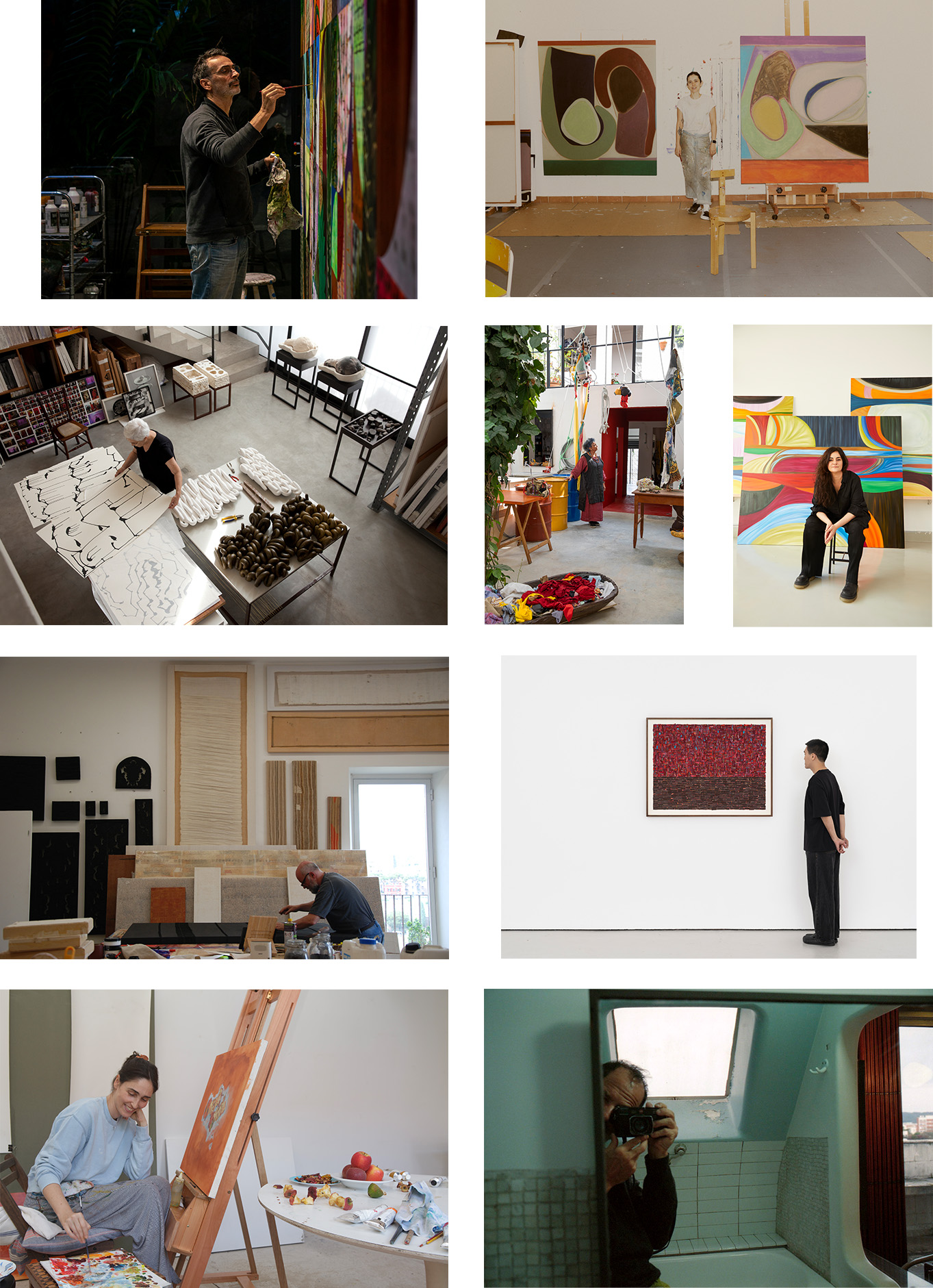
Le Corbusier and Brazil
Le Corbusier actively contributed to the development of modern Brazilian architecture, both nationally and internationally. He influenced and collaborated with a whole generation of young architects in Rio de Janeiro, including Lúcio Costa, Oscar Niemeyer, Affonso Eduardo Reidy, and Jorge Moreira, as well as members of the São Paulo School, such as Vilanova Artigas and Paulo Mendes da Rocha.
Le Corbusier was close friends with Lucia Costa and Oscar Niemeyer throughout his life. In 1936, during his second trip to Brazil, he worked with them on two major projects, the University City in Rio and the Ministry of National Education and Health, for which he provided Costa with the initial plans. Niemeyer and Le Corbusier met again a few years later as part of a team of ten international architects led by Wallace K. Harrison to design the United Nations headquarters in New York (1948-1952), which is still considered one of the city’s most iconic buildings. Based on Lucio Costa’s preliminary sketches, Le Corbusier drew up the plans for the Maison du Brésil (1952-1959) within the utopian bastion of the Cité Internationale Universitaire de Paris. This emblem of modern architecture is now listed as a historic monument.
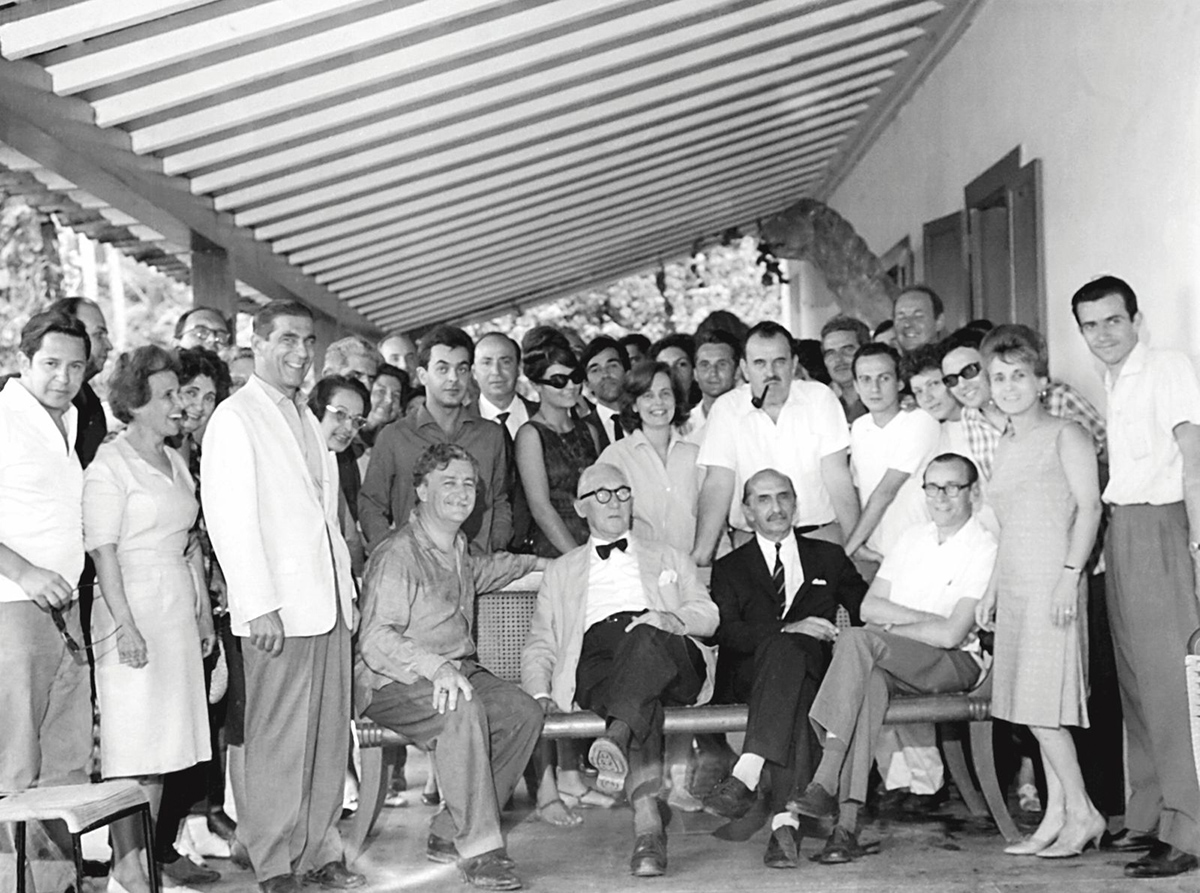
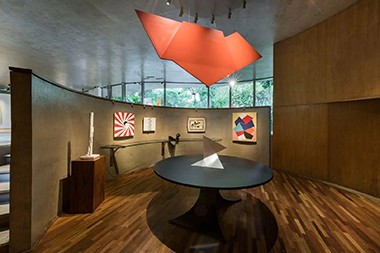
ABERTO
The first edition of ABERTO in 2022 took place in the only private residence in São Paulo designed by Oscar Niemeyer. Organized with the support of the Fundação Oscar Niemeyer, the exhibition, which included furniture designed by the legendary Brazilian architect and his daughter, Anna Maria, was a huge critical success. In 2023, the second edition of ABERTO took place in a residence designed by Villanova Artigas, a leading figure of the famous Paulista school. One of the highlights of the exhibition was a bookcase designed by Artigas for his daughter Rosa, combining historical influence and modern design and incorporating all his architectural principles. The third part of the project in 2024 paid tribute to the architectural and artistic work of two extraordinary Brazilian-Asian creators, Tomie Ohtake and Chu Ming Silveira, allowing the public to discover their modernist villas for the first time.
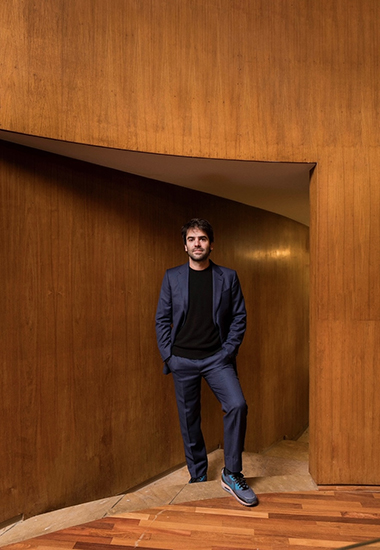
Filipe Assis
Founder of ABERTO
Filipe Assis, born in São Paulo in 1987, is an art advisor and the founder of ABERTO. Splitting his time between London and São Paulo, he is dedicated to promoting Brazilian art and design internationally. Assis holds a master’s degree from Sotheby’s Institute of Art in London and an MBA from SDA Bocconi in Milan. He is a patron of the Tate Modern and the Serpentine Gallery, highlighting his significant role in the global art community. With a background in finance and real estate, including nine years at the luxury real estate firm JHSF, and experience managing funds at Itaú Bank and Generali Real Estate, Assis brings a unique business perspective to the art world. Since founding ABERTO, he has worked closely with renowned curators Kiki Mazzucchelli and Claudia Moreira Salles to establish it as a leading platform for Brazilian arts, integrating his business acumen with his passion for art.
“We’re delighted to bring ABERTO’s distinct curatorial approach to France and feel honoured to represent our country’s rich cultural heritage in the legendary Maison La Roche. Rarely has one person left such an indelible mark on a country as Le Corbusier has on Brazil which ranges from the modernist architecture that surround our daily lives to the exciting new creations by young artists today. It therefore made perfect sense to launch our first international project in one of Le Corbusier’s most emblematic buildings in France. A skilled visual artist, writer, and social thinker, his varied practice reflects ABERTO’s own interdisciplinary ethos.”
Lauro Cavalcanti
Curator
Lauro Cavalcanti, born in Rio de Janeiro in 1956, is an architect, anthropologist, curator, and writer. From 1992 to 2014, he was the director of the Cultural Centre Paço Imperial in Rio de Janeiro. Currently, he is the director of the Instituto Casa Roberto Marinho in Rio de Janeiro, and an advisor of the Casa Lúcio Costa, the Fundação Oscar Niemeyer and the Fundação Roberto Marinho. Cavalcanti was a visiting researcher at the National Gallery, Washington D.C. in 1996, professor in charge of the program of theory and history of contemporary architecture at the University of Rio de Janeiro in 1998, and a visiting scholar at the Canadian Centre for Architecture in 1999. He is now a professor at the Superior School of Industrial Design in Rio de Janeiro. An expert on Le Corbusier’s interactions with Brazil, he has written three books on the subject and an additional four on architecture, aesthetics, and society. He has been chosen by the French consulate for a residency at the Fondation Le Corbusier this year.
“ABERTO4 highlights Le Corbusier’s exceptional artistic work, which has received little attention compared to his work as an architect and urban planner.”
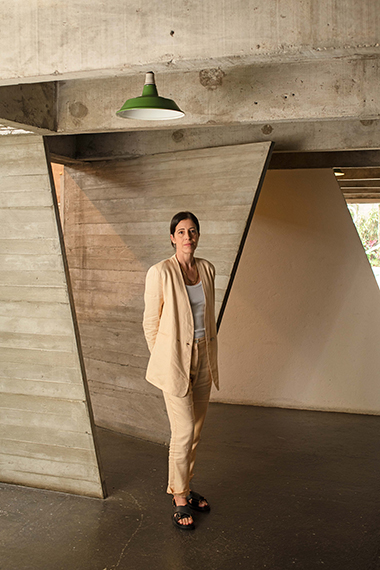
Kiki Mazzucchelli
Commissaire
Kiki Mazzucchelli, born in São Paulo in 1972, has been an active curator since the early 2000s. In recent years, her research has been dedicated to expanding and enriching art historical narratives, particularly focusing on Latin American artists. She has authored and edited numerous publications spotlighting Latin American art, including the monographs of Tonico Lemos Auad (Koenig, 2018) and Marcelo Cidade (Cobogó, 2016). Mazzucchelli is also known for her roles as co-founder of the independent space Kupfer in London (2017) and the residency for Brazilian artists at Gasworks, also in London (2017). Since the beginning of 2022, she has served as the artistic director of Galeria Luisa Strina, further solidifying her commitment to promoting contemporary art and artists.
“For its first international edition, ABERTO focuses on one the most fertile exchanges in the history of architecture and its impact on Brazilian art, architecture and design. While Le Corbusier’s direct influence on a new generation of modernist architects in the second half of the 20th Century is clear, ABERTO4 draws a parallel between the popularization of the international style and the birth of geometric abstraction in the country. By bringing contemporary artists who created commissioned works in response to Le Corbusier’s legacy in different fields, the exhibition examines his lasting impact on the present.”

Claudia Moreira Salles
Commissaire
Claudia Moreira Salles, a distinguished designer, graduated from the Superior School of Industrial Design in Rio de Janeiro in 1978. Her career began at the Industrial Design Institute of the Museum of Modern Art in Rio, where she worked on a furniture project for public schools. Relocating to São Paulo, Salles joined the design team at Escriba, a furniture factory, pursuing more authorial projects and immersing herself in woodworking and craftsmanship. Her initial pieces were marketed by Nanni Movelaria, a trailblazer in promoting independent designers during the 1980s. In the 1990s, Salles crossed paths with Etel Carmona, who had established a factory dedicated to reviving traditional woodworking techniques. Together, they explored the simple yet rich language of standard furniture design, focusing on native woods. Over time, Salles expanded her collaborations to include brands like Firma Casa and Dpot, diversifying her practice to encompass objects and lamps for various clients. Internationally, she is represented by Galeria Espasso in New York, Miami, and London, as well as by ETEL in Milan.
“An essential element in Le Corbusier’s architecture, especially in the Maison La Roche, is the color palette he used not decoratively but to accentuate the perception of spaces. The commissioned or chosen works were selected with consideration of the chromatic dialogue, not to match, but to enhance the expression of each environment”
